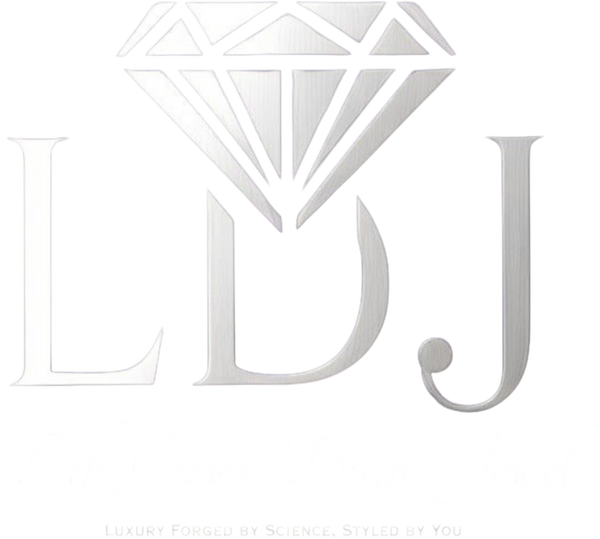When you are on a search for the lab-grown diamond all of jewelry in a multitude of forms, for instance, a Lab Grown Diamond Tennis Bracelet, Solitaire Ring, Cluster ring or All Type Of Engagement Ring you are highly likely to come across the clarity ratings such as VVS, VS, and SI. What do these letters indicate, though? And in what way should they affect your decision?
This article is an overview of a clarity concept, the grading procedure, and prioritizing the best clarity level matching your budget, style, and shine needs.
What Is Diamond Clarity?

Diamond clarity is a measure of the diamond's cleanliness or perfection that is done, both internally and externally. Also, lab-grown diamonds that were made in high-tech labs with the help of CVD (Chemical Vapor Deposition) or HPHT (High Pressure High Temperature) methods may have some invisible internal inclusions or external blemishes due to the growth process.
Clarity scale depends on the size of the imperfection which is observed under 10x magnification.
Clarity Grades Overview
Here's a simplistic graph depicting the most usual clarity grades employed in the jewelry composed of diamonds grown in the lab:
Clarity Grade |
Description |
Visibility |
Best For |
|
VVS (Very Very Slightly Included) |
Inclusions are extremely difficult to detect even under magnification |
Completely clean to the naked eye |
Luxury rings, engagement jewelry |
|
VS (Very Slightly Included) |
Very small inclusions visible only under 10x magnification |
Eye-clean in most lighting |
Everyday jewelry, high-end chains |
|
SI (Slightly Included) |
Inclusions are more noticeable under magnification and may be slightly visible |
Slightly visible in certain lighting |
Bold designs, cluster Ring |
How Clarity Affects Diamond Design
Different jewelry styles highlight or hide clarity:
- Solitaire Rings: The clarity is more obvious, so VS or VVS is perfect.

- Halo & Cluster Settings: These settings hide inclusions almost perfectly, thus SI clarity diamonds are an excellent choice.

LabGrownDiamJewel focuses on matching clarity, carat, and cut in order to make brilliance shine through at various price levels and for different customer requirements.
|
Clarity Grade |
Approx. Price Difference (per carat) |
|
VVS |
Highest price |
|
VS |
20–30% less than VVS |
|
SI |
40–60% less than VVS |
Smart Buy Tip:When looking for an iced-out piece, going for SI clarity diamonds means that you get the most size and presence while still maintaining the brilliance.
Which Clarity Grade Should You Choose?

VVS Clarity (Top-Grade Clean Look)
When you need something that is almost flawless, VVS clarity is a perfect option. It is perfect for the main stones in engagement rings or high-value minimalist designs if the focus is on brightness and no flaw.
VS Clarity (Best Value)
VS clarity diamonds give the impression of being flawless to the unaided eye at a more affordable price than VVS. It's ideal for tennis bracelets, solitaires or custom-letter pendants where you need a great sparkle but don't want to pay too much.
SI Clarity (Budget & Style-Friendly)
SI clarity lab-grown diamonds are perfect for flashy, iced-out Minimalist jewelry such as Tennis Bracelet, Solitaire rings, and clustered rings. These types of settings usually mask the lower clarity of the stone, so the jewelry can still glow as if it were of high clarity, but no high-clarity stone is needed
FAQs
Q: What does VVS mean in lab-grown diamonds?
A: It means the diamond has Very Very Slight inclusions that are nearly impossible to see, even under magnification.
Q: Are SI clarity diamonds bad?
A: Not at all! Especially in jewelry with lots of sparkle, SI stones can still shine beautifully—especially when well-cut and well-set.
Q: Can lab-grown diamonds have flaws?
A: Yes, but far fewer than natural diamonds. Lab conditions are more controlled, leading to cleaner stones.
Q: What’s more important—clarity or cut?
A: Cut affects sparkle the most, so always prioritize cut over clarity if you're aiming for brilliance.
Final Conclusion (Extended Version)

Lab grown diamond clarity—VVS, VS, and SI—definitely not the case of right or wrong, good or bad. It is a matter of getting the right match for your life, your sight, and your narrative. One clarity grade can suit a particular jewelry style, a usage and a personal taste best by its features.
-
VVS clarity diamonds are definitely for the people who want nothing but the most flawless brilliance and the highest level of luxury perfection. A VVS diamond is not only suitable for the solitaire engagement ring but also the signature pendant and it still retains its elegance over the years.
- VS clarity Strikes the perfect balance with the value and quality. These diamonds are eye-clean and beautifully radiant, which makes them the perfect Labgrown Diamond for Ring, tennis chains, Bracelet and daily wear fine jewelry. You get the high-end appearance—without paying too much for invisible flaws.
- SI clarity is your favorite place when it comes to jewelry that makes a bold statement where size, presence, and design are the main focus. In Lab Grown Diamond, cluster rings, and iced-out Jewelry, SI clarity shows its best side and enables you to go big without spending too much.

